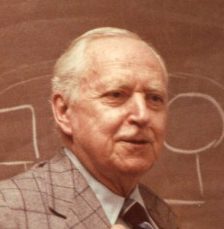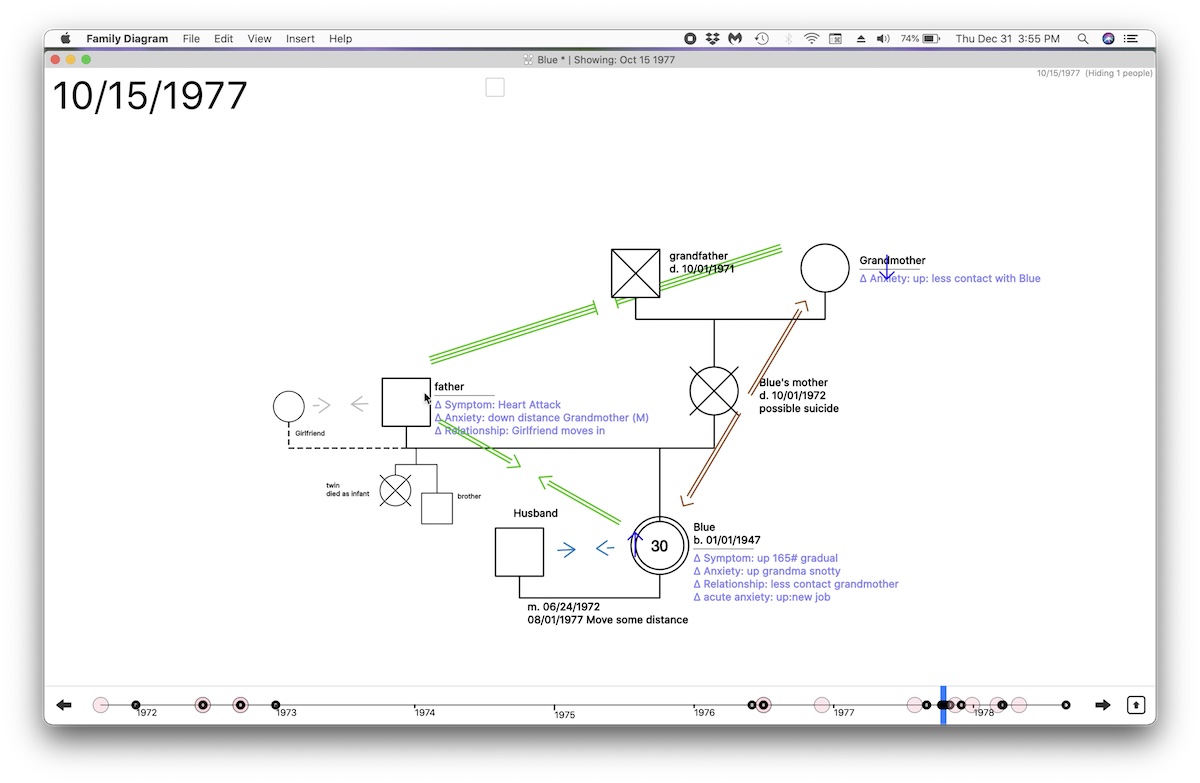Here is a list of Bowen literature for new students of Bowen Theory. The Bowen Theory, formerly known as family systems theory, is the result of a research effort to develop viable science of human behavior. It describes one aspect of the human, the evolutionary function of the human family to regulate its members to ensure the survival of the group. Knowledge of theory can help a person get organized in understanding the impact of their relationships on their own functioning. Most importantly, it can help a person discover their own part in these predictable relationship processes. This view generates straightforward choices to improve one’s own functioning.
The Bowen Center’s description to the Eight Concepts
http://thebowencenter.org/theory/
The Bowen Center for the Study of the Family, formerly known as the Georgetown Family Center, was founded by Murray Bowen in 1975. It currently operates as a non-profit in Washington D.C. Their website contains a very brief overview of the eight concepts of the theory. This is a simplistic but useful summary of the Bowen theory.
Micheal Kerr: One Family’s Story (2003)
One Family’s Story offers an introduction to the eight concepts of Bowen family systems theory, which is a theory of human behavior that views the family as an emotional unit and uses systems thinking to describe the interactions in the unit. Those concepts are Triangles, Differentiation of Self, Nuclear Family Emotional System, Family Projection Process, Multigenerational Transmission Process, Emotional Cutoff, Sibling Position, and Societal Emotional Process. In One Family’s Story, author Michael E. Kerr, MD uses a fictional family to illustrate the eight interlocking concepts Dr. Murray Bowen developed to describe these complex interactions. (Summary credit: The Bowen Center website)
Roberta Gilbert: The Eight Concepts of Bowen Theory (2018)
This is a wonderful introduction for the beginning student of Bowen Theory. It is written to be read from start to finish, walking the reader through basic assumptions and concepts of Bowen Theory. It serves as a go-to reference for people with no knowledge of theory.
Michael Kerr & Murray Bowen – Family Evaluation (1988)
This is probably the most comprehensive view of Bowen Theory that is intended to be read as a step-by-step walkthrough. It was written by Michael Kerr, who worked closely with Bowen. It is for a more serious reader who is interested in understanding the core assumptions which differentiate the natural systems paradigm of Bowen Theory from conventional thinking. Understanding this way of thinking – thinking natural systems – is an essential part of understanding the Bowen theory.
The first chapter takes a step back into the philosophy of science to outline basic concepts of developing and using theory in the natural sciences. It describes the role of theory and what is meant by “systems thinking” in a broader context than simply thinking systems about the human family. This is an important introduction to first assumptions that must be understood prior to developing a comprehensive understanding of the Bowen Theory.
The last chapter in the book covers the process of the clinical evaluation of a family. This chapter represents the synthesis of all previous chapters on the Bowen theory itself. While clinical readers may be more interested in this chapter than the average reader, understanding the assumptions and theoretical concepts in the previous chapter is essential for grasping the method of evaluation proposed in this chapter. The concepts contained in this final chapter can assist any individual in understanding the emotional process in their own family and their own part in it.
The epilogue of this book was written by Murray Bowen. This seminal work is a reflection on his career developing theory, and most importantly the way of thinking behind it. This epilogue is be a boon or anyone interested in the philosophy of science as it applies to knowledge of human behavior and adaptation. It can be read apart from the rest of the book if the reader so desires.
It should be noted that Bowen specifically avoided collaborating with Kerr on the earlier chapters of the book to keep his own thinking on their “well differentiated” from Kerr’s. Aside from the prologue and epilogue, Bowen contributed nothing to the other chapters of this book.
Daniel V Papero – Bowen Family Systems Theory (1990)
Like Michael Kerr, Papero produced his own perspective on family systems theory and its applications. One of Papero’s academic strengths is synthesizing existing scientific literature in comparison with the propositions of Bowen theory. Published two years after Kerr’s book and in the same year of Bowen’s death, it covers some of the literature relevant at the time and how one might begin to think about human functioning from a systems perspective. He reviews some basic assumptions of Bowen theory, often quoting Bowen himself. The focus is on the development of theory and the understanding of human behavior. As with Bowen and Kerr, Papero demonstrates that a focus on Bowen theory is a focus on science and not simply a therapeutic technique or mode of “family therapy.”
Murray Bowen – Family Therapy in Clinical Practice (1978)
Bowen’s only published book is probably best approached by clinical readers or readers who really want to understand Bowen’s thinking in detail. His writing is very rich, with each sentence presenting one discrete idea closely linked to the next. As a researcher moving toward an accepted science, he presents most every idea in as straightforward and simple a manner as possible.
This is the most cited and canonical source in the Bowen Network. It is not written as a single volume but is a chronological collection of his papers from 1957 to 1977. He writes that the development of his theory “paralleled most evolutionary processes. It began slowly when several key ideas began to coalesce into a different way of understanding the human phenomenon” (kpp. 12), but that sudden “rapid evolution of the theory is largely responsible” for the fact the he had “gone twenty years without writing a book” (kpp. 12).
Of note in this book is the chapter On The Differentiation of Self, an edited version of “The Anonymous Paper,” which is Bowen’s recounting of his effort at differentiation in his own family. The events chronicled in this paper, along with the presentation of this paper itself to “the family of family therapists” represent the most famous and most important events in Bowen’s career. They proved that the human family was predictable enough for one person to put forth a systematic effort at “growing up” within it. This paper is recommended for readers of all levels and interests.
Ruth Sagar (Eds.) – Bowen Theory and Practice: Feature Articles from the Family Center Report 1979-1996
Bowen Theory and Practice is an edited volume of selected papers previously published from 1979-1996 in the Family Center Report, a newsletter of the Georgetown Family Center. The Georgetown Family Center is now known as the Bowen Center for the Study of the Family and exists in the same location in Washington, D.C. Many of these papers reflect much of the basic attitude and philosophical basis for Bowen theory and its applications.
This edited volume is indispensable for the most serious students of Bowen Theory. It contains articles written by leading Bowen scholars which cover essential philosophical principles of natural systems thinking. While simple but quite intellectually “deep,” these short papers will capture the imagination of any reader interested in complexity science as it applies to biological phenomena.





